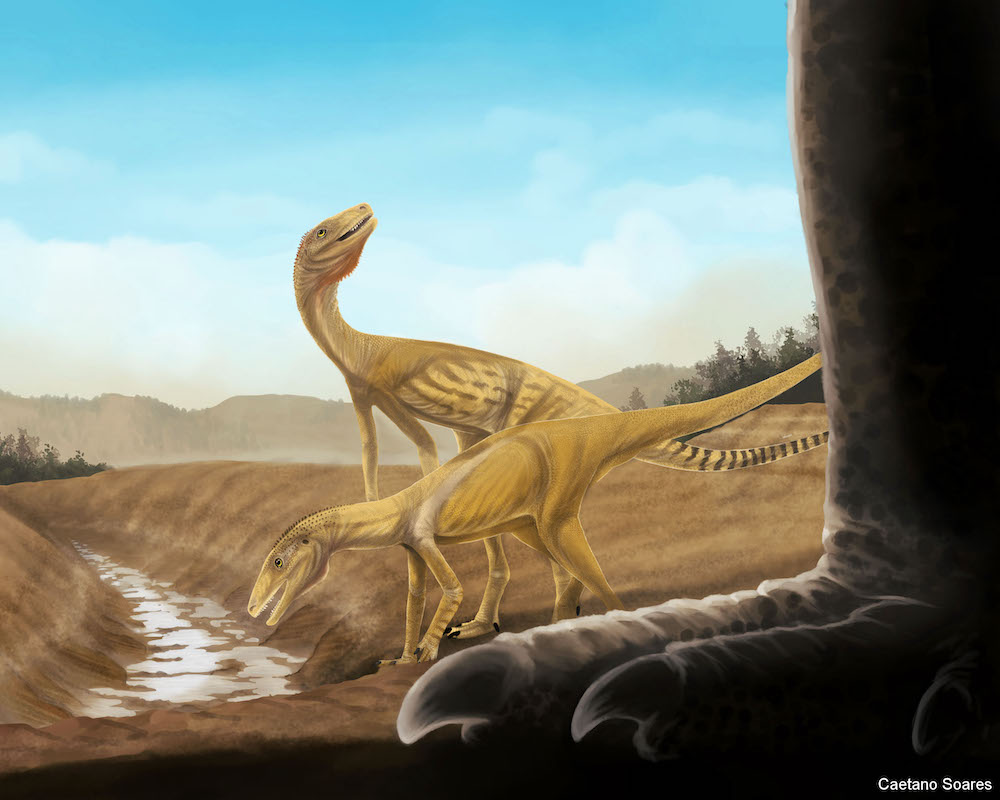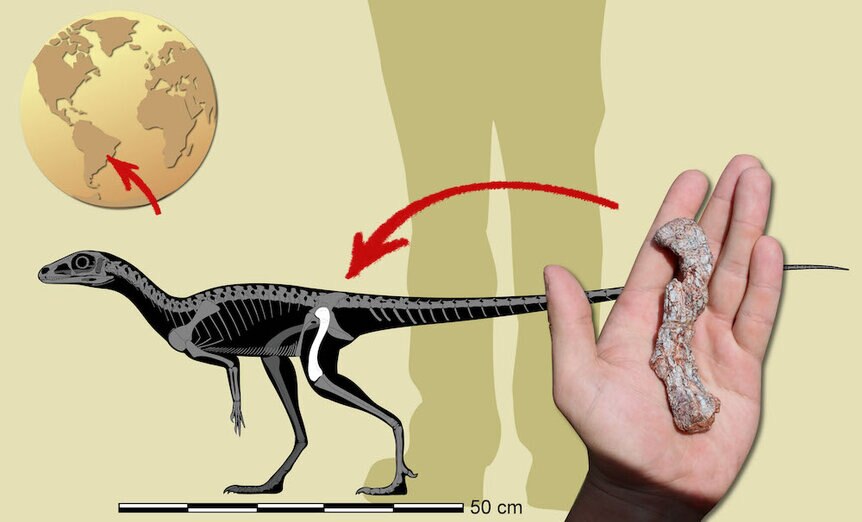Create a free profile to get unlimited access to exclusive videos, sweepstakes, and more!
The struggle was real for the oldest proto-dinosaur found in South America
Dinosaur ancestors weren't so "dino."

“Dinosaur” literally translates to “fearfully great lizard,” but for dinosaurs to become overlords (at least until 66 million years ago), they had to have evolved from something.
The predecessors of dinosaurs were no behemoths. Most dinosauromorphs were smaller creatures that had to fight for survival so their successors could dominate the entire planet someday, and now the oldest one ever found in South America has been unearthed. It unexpectedly surfaced in Brazil, which has been just about devoid of proto-dinosaur fossils, and left behind just one femur, or thigh bone — enough to give itself away as the ancestor of monsters.
Why so many fossilized dinosauromorph remains have been found in what is now Argentina but not Brazil remains unknown. Their bones may have not fossilized well enough. Paleontologist Rodrigo Müller of Universidade Federal de Santa Maria in Rio Grande du Sul, Brazil, who coauthored a study recently published in Gondwana Research, has some ideas on why the things that would evolve into dinosaurs haven’t really shown up in the Brazilian fossil record.
“The Mid-Triassic fossiliferous beds from Brazil usually do not reveal great preservation of the fossil elements,” he told SYFY WIRE. “This affects our capability to identify delicate structures, making the recognition of certain creatures, especially the small ones, more difficult.”
So there might have been more fossils from proto-dinosaurs excavated and sitting in the back of a museum somewhere, unidentified. It also might be that some remains have been forever lost to the ravages of time. Other, possibly older dinosauromorph fossils have emerged from sites in Tanzania and Zambia, but there have been questions as to whether those other fossils are really as old as they were thought to be. If they aren’t, there is a chance that this ancient reptile, which may or may not be a new species, might be the oldest proto-dinosaur ever excavated.
The femur Müller and his team found is just 11 cm long, nothing like the bulky, heavy bones of something like Argentinosaurus which thundered through South America millions of years later. This specimen was distinguished as belonging to an earlier dinosaur relative by a feature on its thighbone known as the trochanteric shelf, which muscle would have been attached to in the living reptile. It is also thought to have fed on insects and small vertebrates, and been bipedal as opposed to the many quadrupedal beasts that would appear long after it went extinct.
"Dinosaurs evolved in ecosystems dominated by other reptiles and mammalian ancestors,” Müller said. “They were the minority, so they probably disputed for resources during their initial evolutionary radiation.”
It might be hard to believe, but dinosaurs had a rough start. Dinosauromorphs were not large and in charge, having to constantly compete with enormous herbivores known as dicynodonts. Some of these could grow as huge as an elephant, and where there is outsize prey, there are inevitably outsize predators. Carnivores that evolved to take on dicynodonts included the crocodile relative Prestosuchus chinquensis, which was not an ambush predator waiting in the water but instead prowled on land. This 20-foot killing machine was not to be messed with.
Dinosauromorphs didn’t have what it would have taken to sink their teeth into a dicynodont. What is known through the fossils that have been recovered is that their teeth showed adaptations typical of herbivores and omnivores. They also had to dodge Prestosuchus and other carnivores if they wanted to stay alive. There was fierce competition for resources, and when you’re surrounded by enormous creatures that snap up all the food, you have to fight to grab something that will keep you alive. That would all eventually change.
“Dinosaurs evolved from carnivorous animals; some dinosaur groups developed a herbivorous diet posteriorly,” said Müller. “They could not process plants as well as animals with fully herbivorous adaptations, and probably disputed with them.”
So dinosaurs may have not immediately turned into thunder lizards and tyrant lizards, but you have to start somewhere.



























